I realise that I have so far said very little about this season’s archaeological aims. Partly this is because the archaeology has been progressing very nicely in the background behind all of the immediate day to day concerns which make up a large dig like Silchester…
But – here goes! The trench encompasses 2 different date ranges; the late Iron Age and the early Roman. The early Roman archaeology (c. AD 40 – 60) is located in the complicated south-east area of the trench where Natalie is supervising the excavation of at least 2 early Roman buildings, both with a central hearth and a clay floor. These are clearly workshops of some kind; the mass of charcoal and the intense reddening of the floors supports this, along with the presence of huge numbers of fragments of cooking vessels (Silchester ware) buried within the clay surface of the northern building – including at least one – and probably more – intact whole vessels buried on their sides. Their purpose is as yet unknown – possibly for holding water to quench any industrial processes being carried out? The key thing to note about these buildings is that they are on the Roman orientation i.e. orientated north-south/east-west and, along with Matt and Rob’s clay-floored buildings to the north, represent a brief emergence of the traditional Roman layout replacing the original Iron Age ‘diagonal’ layout here. These early Roman buildings appear to be relatively short-lived, and by the end of the 1st century AD, are replaced again by the original diagonal layout. These Iron Age origins are strong and do not give up easily! Rob and Matt in the centre of the trench are each supervising areas which are revealing these clay floored buildings on the Roman alignment. Like Natalie’s buildings they contain hearths, and like Natalie’s buildings they too have no discernible limits. We cannot find their walls! So – the aim of these 3 areas is to explore and investigate the layouts and functions of these early Roman buildings…..could they be evidence of a brief military occupation of Calleva for 5 or so years after AD43…before the army moves on?
Everywhere else the site is into the Iron Age. Trapper and Chris are supervising the northern area of the site and, amongst other objectives, are excavating the surfaces of the diagonal Iron Age lane running in a curve across this area. We know this lane was still in use in the early Roman period, and contemporary with Natalie’s, Rob’s and Matt’s clayfloored buildings – but when was it constructed? And what lies beneath? To the north of this lane Chris is stripping the area down to the natural geology: at first sight this area looked barren – but now, especially after a number of heavy rain showers, we can see beam slots – some on an east-west alignment, and some on the diagonal alignment. There are alos large numbers of post-holes, small pits, stake-holes – and even a possible well – making an appearance. To the south of the Iron Age lane, the aim is to strip the undifferentiated garden-like soils away and reveal the Iron Age features dug into the natural geology. Once again the last few days rain is revealing large numbers of pits and linear features, possibly ditches, clustering on the south side of the lane – and we believe we can also see the emergence of a round house here with a compacted gravel floor and an enclosing gulley. It is early days but we are hopeful.
In the south-west and southern areas, Sarah is working beneath the return of the Iron Age street here and has revealed a large number of linear features and lines of post-holes which mimic the alignment of the later Iron Age street. These are probably the remnants of fence-lines, palisade trenches for allotments, all organised and extending into the centre of what may turn out to be an Iron Age ‘block’…a predecessor to the later Roman insula – and evidence that the Iron Age town was to some extent planned and organised. Hen, to the south and east of Sarah’s area is stripping back large swathes of Iron Age soils to reveal the features beneath: pits, ditches, beam slots and post-holes. The aim here is to begin to understand what the Iron Age town looked like – what did the buildings look like and where were they located?
And – to top it off- Hen is supervsing the excavation of a well in her area. John Brown has shored it beautifully and for the past 10 days Richard, James and Boris have been learning the mechanics of well-digging: shoreing, pumping out the rising water table, and digging extremely wet, extremely claggy material – which has to be hoisted up over 2.5metres and then taken to the environmental team for wet sieving. These are practical support skills which are integral to excavation work – and John is taking care to pass his knowledge on.
So – there we are…poised for great discoveries over the next 4 weeks!

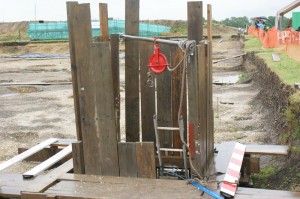
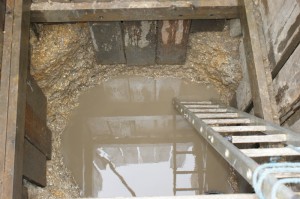
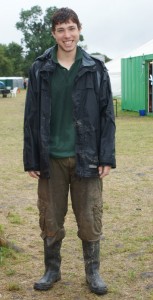
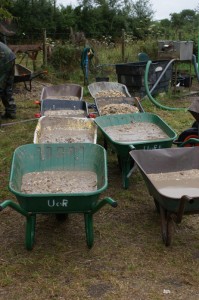
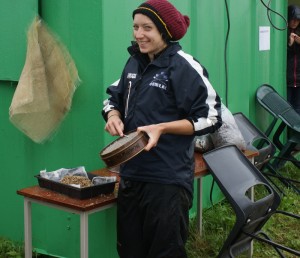
The crossover between the phases sounds extremely challenging and interesting. Wish I was there excavating with you, all being well may get up for a visit. Best wishes for the next few weeks.